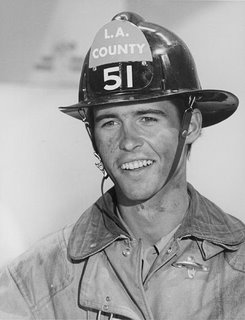
Originally posted January 7, 2003
I feel that I must explain a few things regarding some of the things in the last entry. Let's talk CPR.
There are things about CPR that they don't teach you when you get certified by the Red Cross. No matter how many times you've seen it work on television, "it don't make it so." For instance, the television show CSI Miami recently had an episode that began with a plane crash in a swamp. I'm not sure how but the CSI investigators were on scene within minutes of the crash and found a person in the grass. One of them leaps to the injured man's side (who was moments earlier moaning loud enough for them to find him) and says, "He's not breathing." Up to now everything is perfectly plausible. But at the statement, "he's not breathing," the rescuer immediately begins chest compressions. Now there are many reasons someone might stop breathing but still have a pulse: blocked airway, respiratory alkalosis, and respiratory arrest to name a few. And while cardiac arrest can accompany any of these conditions it doesn't have to. You can stop breathing and still have a pulse. You do it every time you duck your head under water. That's why you check for a pulse before you start pounding away on someone's chest, which is a step that the rescuer on television skipped for some reason. He probably didn't feel like giving mouth to mouth to another man and the producers figured chest compressions looked more dramatic on television anyway. So where was I?....
Now, I've only been a firefighter for a little bit over five years but I have yet to save someone with CPR. More often than not that has to do more with our response time to the scene and the amount of time that the patient has gone without CPR than with the actual mechanics of the procedure. Don't get me wrong, CPR is a great thing and everyone should know it. It has saved lives. I just haven't seen any of them and the longest I've gone without doing CPR is about three weeks. CPR is great if you happen to be standing next to the patient when the go down and you can immediately initiate it. But after about the first five minutes someone is down you can pretty much forget it. Considering our average response time from the moment you call to when we arrive is seven minutes, the patient is beyond our saving when we arrive. But we put on one hell of a good show.
CPR is a very nasty business. As air is forced into the patient most of it, due to human anatomy, ends up in the stomach instead of the lungs. As air builds up in the stomach it forces stomach contents up the esophagus, past the epiglottis (which is not unlike the little white stick that guides bowling balls onto either of the two sides of the rack when they return from the underworld. Your epiglottis does this for your stomach and lungs directing food or air into the correct tube.) into the back of the throat. Each breath displaces more and more.
Chest compressions can break ribs at the point that they connect to the sternum which is a feeling you won't soon forget should you have the opportunity. With each downward thrust you are literally squeezing the heart in between the sternum and the spine to force blood to circulate. This downward motion also expels air from the lungs and the patient will begin to gurgle if the aforementioned vomit is present in the back of the throat.
Most of the times the patient's eyes are fixed and open. You don't shut them as this might be misconstrued by friends or family of the patient as though you have given up. There is also sometimes the smell of fecal material as the body loses control of the bowels.
Now just as there are rules and certainties about CPR the same would seem to be true about the people needing CPR. For one thing they always seem to fall out in a hole, closet, bathroom, under a table, etc. Anywhere that it's hard as hell to get around them and work. So you have to move them before you can begin. And most CPR candidates are overweight and thus very difficult to move. See how this progresses?
I don't paint so pretty of a picture. But guess what! It only gets worse if the patient is revived because the first thing they will do is vomit. Also, if the patient is brought back from the brink there is now the added threat of developing pneumonia due to aspirating vomit into the lungs.
Enough about CPR! Let's talk paddles. As in defibrillator paddles. Now contrary to popular opinion these are not soul injectors. They cannot restore life. Think of them as a reset button on the ball return at the bowling alley (again with the bowling analogies!). If the patient's heart is contracting but not effectively than the paddles stand a chance of knocking some sense back into it and resetting it to a normal rhythm. However, if the patient has no cardiac activity or is "flatline" the paddles don't do a damn thing. As I said before they can't miraculously restore life to dead tissue. I know Gage and DeSoto looked cool using them but they aren't the duct tape of the paramedic toolbox. (It should be noted that I still consider Emergency! to be the most accurate portrayal of what I do at work. There's a lot of kidding, a lot of B.S. calls and occasionally you get the chance to help someone.)
Well that's enough rambling for a while. Talk to you soon. Squad 51 OUT, KMG-365.

No comments:
Post a Comment